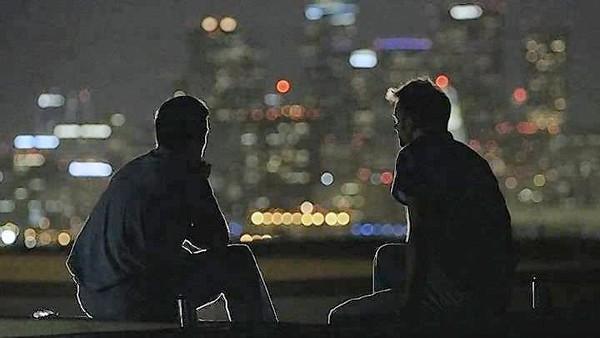CODE BLACK
Long Shot Factory
Reviewed for Shockya by Harvey Karten. Data-based on Rotten Tomatoes
Grade: B+
Director: Ryan McGarry
Screenplay: Ryan McGarry, Joshua Altman
Screened at: Review 2, NYC, 6/3/14
Opens: June 20, 2014
In making yet another excuse for avoiding governmental support for health insurance, President George W. Bush callously stated, “If they don’t have insurance, they can go to the emergency room.” True enough that everyone in America can get medical care even if they have no money, but there’s no way you can compare the treatment you get in an emergency room with that you can get from your own doctor or, at an even higher level, from your boutique health providers with whom you can contract for a sizeable annual fee. And the worst kind of emergency room, one which requires the typical patient with a non-life-threatening problem to wait ten, fifteen, yes even twenty hours to see a doctor, can be found a public hospitals which are financed by taxpayers and which, by Act of Congress during the 1980s are required to treat all comers whether undocumented, uninsured, or just plan poor.
In a documentary that took Dr. Ryan McGarry four years to make, “Code Black,” which is the term used to describe the common situation in which the Los Angeles County (public) hospital emergency room is full, takes us into what looks like complete chaos, groups of doctors and nurses surrounding patients on tables to treat gunshot wounds, stabbings, heart attacks and presumably bad headaches. These doctors are the real thing. They’re young and sharp-looking, and they choose emergency medicine as their field though they realize that this puts them on the lowest rung salary-wise. They’re idealists who may or may not remain with this specialty for a lifetime and, in fact, as one of the older physicians tells us, they’re regularly bleeding nurses and other staff who go on to perhaps more lucrative and comfortable fields.
In some graphic takes, we are privy, like the interns and medical students who sit in the balcony as spectators, to surgery involving attempts at CPR some of which are unsuccessful, and invasive procedures involving the placement of instruments deep inside the hapless patients’ ribs, chests, and abdomens. We take a look at the masses of people who sit close together on upholstered chairs looking as though they’re waiting for Godot, not a single one of them using the time to read, to do puzzles, or distract themselves to make the time go by more quickly.
When the county received a spanking new hospital paid for by the taxpayers, an additional problem arose. More government regulations were put into place requiring doctors to spend additional time filling out forms rather than dealing wholly with patients. One young doctor is put off by the separation he now feels from the patients. He reminisces about the connections he made with those he treated in the older, more dilapidated institution. Who needs sterile hallways?
You can have a lot more fun with a Michael Moore documentary like “Sicko,” putting up with Moore’s obvious manipulation such as showing how some Americans got faster and better treatment by going with him to Cuba. But notwithstanding Moore and a bevy of “Grey’s Anatomy” type TV fare that make hospitals dramas as exciting as police stories, you cannot get a better look at the real thing—the heartaches, the drama, the cheers for missions accomplished—than you can get with an authentic, boots on the ground doc like this one.
Unrated. 82 minutes. © 2014 by Harvey Karten, Member, New York Film Critics Online
Story – B+
Acting – A-
Technical – A-
Overall – B+

